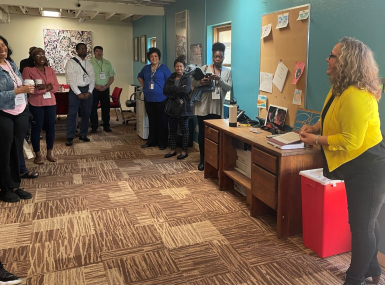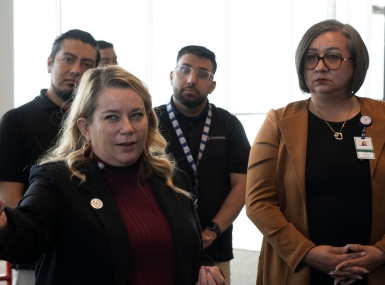Fully Fund the Older Americans Act (OAA)

Author

Rachel Mackey
Upcoming Events
Related News
ACTION NEEDED
Urge your members of Congress to appropriate Fiscal Year (FY) 2024 funding for Older Americans Act (OAA) programs at or above the level of $2.46 billion as authorized in the Supporting Older Americans Act of 2020 (SOAA, P.L. 116-131).
BACKGROUND
Originally enacted in 1965, the Older Americans Act (OAA) supports activities that help older adults live independently and remain part of the community. The U. S. Department of Health and Human Services Administration on Aging (AOA) under the Administration for Community Living (ACL) administers most OAA programs. Only those promoting part-time employment opportunities and community service activities for seniors fall separately under the Department of Labor.
The majority of OAA programs are “core services” authorized by Title III—Grants for State and Community Programs on Aging. These core services vary depending on local needs, but often include transportation, nutrition, support for caregivers, recreation, in-home assistance, disease prevention and more. The OAA also authorizes funding for training, research and demonstration projects in the field of aging as well as grants for services for Native Americans and elder rights activities
States receive Title III Grants according to a formula based on their share of the nation's population of individuals 60 and older. States then pass these funds to Area Agencies on Aging (AAAs), which coordinate programs and services for senior citizens at the local level. Counties are key recipients of these dollars and frequent administrators of these programs. Roughly 25 percent of the 625 AAAs across the nation operate within county governments, while another 28 percent operate within regional planning councils or councils of governments that often include counties. Meanwhile, 56 percent of AAAs rely on local funding streams through counties or other local governments to provide additional programs and services.
As the nation’s population rapidly ages, counties face increasing demand and challenges in providing comprehensive systems of care to their older residents. Federal funding for OAA programs has not kept pace with these demographic changes. Without additional resources, counties will face new challenges in providing the rapidly aging population with access to critical services.
The Supporting Older Americans Act not only reauthorized the OAA for 5 years but provided a critical increase in the authorized funding level for core services: 7 percent in the first year (FY 2020) and 6 percent annually for the next four years, FY 2021 through FY 2024. However, programs under OAA are discretionary and subject to the annual appropriations process, meaning Congress may not provide the full increase allowed for in the reauthorization. In FY 2023, OAA programs received $2.378 billion in regular funding (excluding emergency appropriations), $294 million less than authorized levels.
Congress provided emergency funds for OAA programs throughout the COVID-19 pandemic. The Family First Coronavirus Relief Act (FFCRA) included $80 million for Congregate Nutrition Services and $160 million for Home-Delivered Nutrition Services. The CARES Act provided $200 million for Home and Community-Based Services (HCBS), $480 million for home-delivered meals for older adults and supplements to many other programs for a total of $900 million in emergency OAA funding. The Consolidated Appropriations Act of 2021 included $175 million in emergency funding for senior nutrition programs and $100 million in emergency funding for ACL to address abuse, neglect and exploitation of the elderly. The American Rescue Plan Act of 2021 provided $1.4 billion in emergency funding, including $750 million for senior nutrition programs, $460 million for home-and- community-based support services, $45 million for disease prevention and support for several other programs.
KEY TALKING POINTS
- By 2035, for the first time in our nation’s history, the population of adults 65 and older will outnumber children younger than 18, significantly increasing the demand for aging services.
- Approximately 25 percent of the 625 area agencies on aging across the nation operate within county governments while another 28 percent operate within regional planning councils or councils of governments that often include counties.
- 56 percent of area agencies on aging rely on local funding streams – including from counties – to provide additional programs and services.
- Congress should appropriate FY 2024 funding for Older Americans Act programs at or above the level of $2.76 billion as authorized in the Supporting Older Americans Act of 2020.
- Congress should provide full funding for the OAA in future appropriations so that it can keep pace with our nation’s growing population of older adults.





